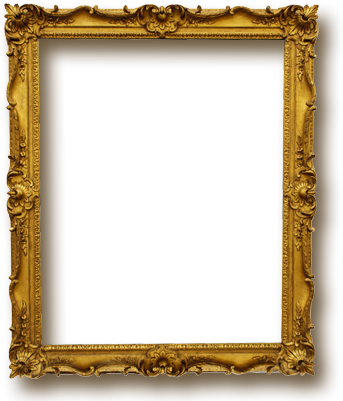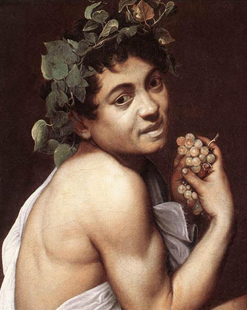Artist Highlight
See other artist highlights:


Caravaggio
Intriguing, as Michelangelo Merisi da
Caravaggio (1571 - 1610) was, his paintings are
even more so in that they are intense, dramatic,
theatrical, daring, sharp and magnetic. His
paintings combine aspects of humanism
interpreted through the dramatic use of light and
shadow. Caravaggio, the Renaissance painter
who is often considered the father of Italian
Baroque, had a complex personality to say the
least, and was even accused of murder.
The painting, the Boy Bitten by a Lizard, 1594-5, perhaps not considered the best amongst his paintings
really draws the viewer in and perfectly illustrates Caravaggio’s daring personality. The painting illustrates
a young boy exhibiting pain, after having his finger bitten by a lizard hidden among the fruit.
This particular painting is rich with symbolism. It is an allegory on pain caused by love. More specifically, it
hints at how carnal love - symbolized by the jasmine and the rose - gave the young man the clap, a very
common sexually transmitted infection prevalent in Rome in the sixteenth century. The anger on the
man's face is perhaps directed towards the lover, whilst the reference to carnal love is once more
suggested by the boy's partial undress. His left shoulder portrays eroticism, both in its uplifted position
and its nakedness. The use of sfumato and chiaroscuro on the shoulder draws attention towards the
boy's eyes. The unusual use of plum color on the lips is another sexually charged detail, and together,
with the blouse the boy is wearing concurs to an androgynous look. However, the white blouse is perhaps
in line with the contemporary dress during Caravaggio's time. The brown material tied in a knot on his left
shoulder however looks like a piece of clothing reminiscent of the Roman times.
Caravaggio was quite innovative for the time.
Lacking money to pay his models, he brought into his paintings people from the streets and with them,
the street language as well. There is something quite theatrical in Caravaggio's paintings. He not only
took friends, models, prostitutes and dressed them in costumes worthy of a play, but he directed them in
roles as well; he added soliloquy in paintings by choreographing the canvas compositions to obtain a
desired effect just a director of a play would at the time. Would it be too much to say he was a rebel, but
equally a genius?
In "Caravaggio: Realism, Rebellion, Reception" Genevieve Warwick points out that X-rays have now
confirmed that "Caravaggio arranged and staged his models according to compositional imperatives".
Figure 2: Caravaggio, Boy Bitten by a Lizard, 1594, Oil on Canvas,
National Gallery, London
Mixing historically faithful attire with contemporary clothes he brought major biblical scenes and strong
relevant subject matters (like the one in Boy Bitten by Lizard) to his viewers very much like a director
would do with a play on stage: to make the audience empathize with and react to them as if these were
happening right then and there and they were part of those scenes.
Figure 3 : Camera Obscura Box
If we take this even further, it appears Caravaggio is a cinematographer as well. He attempted to
transpose in painting what he saw in a camera obscura (Latin for 'dark room' ). Camera obscura was a
device consisting of a box or room with a hole on one side through which light traveled inside projecting
an image upside down. This discovery led to the invention of the photographic camera hundreds of years
later.
Genevieve Warwick tells us more about Caravaggio's fascination with Camera Obscura:
"He might have learned about it from shared scientific interests with his patrons but also from the
world of street theatre, where market stalls included such early "magic shows" staged by means
of models posed outside a dark room."
Sandro Corradini in "Caravaggio: materiali per un processo" says that "an inventory of Caravaggio's
possessions made in 1605 reveals that he owned two (mirrors), one of which was convex." Was
Caravaggio trying to reconstruct the upside down image a Camera obscura would create?
From "La Roma Dei Longhi: Papi e Architettu Tra Manerismo e Barocco" we find out that Caravaggio
"continued using mirrors throughout his career in order to study his posed models through the medium of
reflected glass." All this shows how modern and ahead of his time Caravaggio was.
To conclude, the 20th century art historian Andre Berne-Joffray rightly encompassed Caravaggio's
legacy: "What begins with Caravaggio is, quite simply, modern painting."
Article Submitted By:
Elena Popovici Harding MA:
Board Member & International Museum



